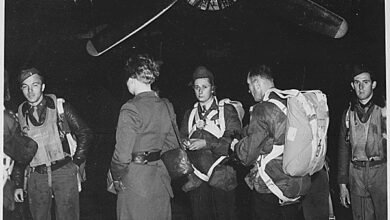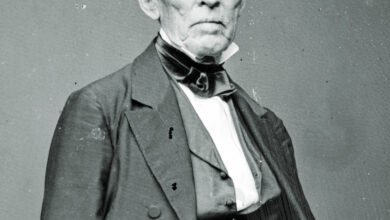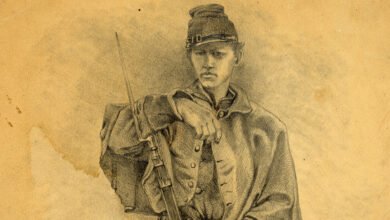To Depict the Frontier Era with Authenticity, This Artist Walks in the Footsteps of Mountain Men

A historian with a brush and a palette, David Wright considers it his mission to depict America’s frontier era with precision. “We historical artists march to a different drummer,” explains Wright [davidwrightart.com] from his home studio in Gallatin, Tenn. “We tell a story. It’s our obligation to future generations to paint our subjects with as much accuracy as possible.”

Wright’s insistence on authenticity has found him riding Wyoming’s Wind River Range on horseback and hunting moose on Canada’s Aulneau Peninsula dressed in brain-tanned buckskins and bearing a frontiersman’s guns and accoutrements. “Such experiences enable me to see things from a much closer perspective than if I were just using past masters like Alfred Jacob Miller, George Catlin and Karl Bodmer as references,” he explains. “Landscapes, rifles, bead and quillwork or Indian tattoos—I want it all to be historically dead-on.” His quest draws him to museums and archives, while his home reference library is also extensive.
“The cliché ‘The more I learn, the less I know’ really is true,” he says. “As long as I am a student of history, I’ll never quit learning.”
Rosine, Ken.—the birthplace of Bill Monroe, the “Father of Bluegrass”—was a country hamlet when Wright was born there in 1942. Idyllic remembrances of flint ridges, cornfields and tobacco rows flood his memories. “My first interests were hunting and fishing and have been all my life.” Always he drew, aided by his mother’s creativity.
“Mom would lay a sheet of paper on her lap and draw,” Wright recalls, then she would take his hand and trace the sketches. At age 9 he won a local art show. After high school he took classes at a Nashville advertising school, then studied watercolor in Italy. The latter move, ironically, kindled his interest in the frontier when he spied a 1777 French musket for sale, bought it and fired it, the flintlock’s smoke and flash awakening latent nostalgia.
By 1962 Wright was back Stateside, drawing for the Nashville Banner and Nashville Tennessean until drafted into service in Vietnam. In 1964 and ’65 he flew more than 100 missions as the door gunner on Bell UH-1 Iroquois (aka “Huey”) helicopters. While in-country he sketched everyone from schoolchildren to Montagnard highlanders and soldiers—though never combat scenes. “Life changes your outlook on things,” the artist says.

(Courtesy David Wright, davidwrightart.com)
On returning home, Wright resumed commercial artwork while freelancing on the side. He experienced another awakening when he joined the rugged fraternity of the American Mountain Men, further sparking his interest in the fur trade as he dressed the part and learned frontier skills.
“Utilizing the day’s firearms and tools gives me an edge in seeing what the lives of our frontier forebears were like,” he explains. “I know what it’s like to build a cabin, split rails, hunt with a flintlock and be freezing in buckskins. I know how wool feels in a snowstorm and how wet leather clings to you.”

(Courtesy David Wright, davidwrightart.com)
Wright’s first mountain man portrait, for Gray Stone Press, sold out. Encouraged, he shifted his focus to portrayals of heroic frontier figures. By 1978 he was following his own muses and garnering national acclaim.
The Eiteljorg Museum, in Indianapolis, has devoted an expansive retrospective to Wright’s work and recognized him with several awards. The Booth Western Art Museum, in Cartersville, Ga., named him an artist of excellence. His art also hangs in Nashville’s Tennessee State Museum and the visitor center of Kentucky’s Cumberland Gap National Historical Park. The Hamilton Collection commissioned Wright to render a series of four collector plates depicting American Indian women. “It is pleasing to be accepted in such a widespread market,” says the artist.

(Courtesy David Wright, davidwrightart.com)
Still, every season finds Wright in the woods, sometimes alone, sometimes with kindred spirits, reliving some footnote of frontier history to preserve in photos, sketches and mental images to inform his paintings. “Every day is a blessing,” says the artist turned mountain man. “Make the most of it.”
This article originally appeared in the Spring 2024 issue of Wild West magazine.
Source link




